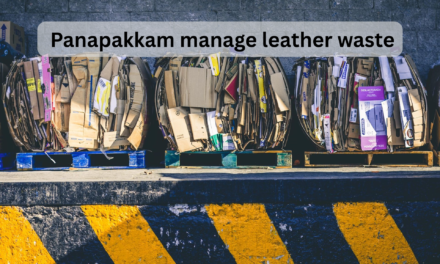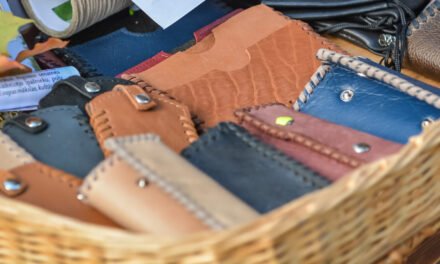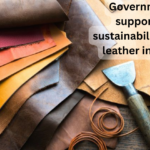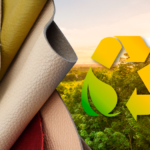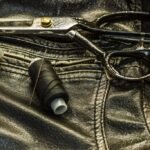The manufacturing of leather jackets involves a series of precise steps, combining traditional craftsmanship with modern technology. From sourcing raw hides to final finishing, each stage is critical to producing high-quality, durable, and stylish leather jackets. Here is an overview of the main steps involved in the process:
1. Sourcing and Preparing the Leather
The process begins with obtaining raw hides and transforming them into usable leather through tanning.
A. Hide Sourcing
- Leather is typically sourced as a byproduct of the meat and dairy industry.
- Common animal hides include cowhide, sheepskin, goatskin, and sometimes exotic leathers.
B. Tanning
- Raw hides undergo tanning to prevent decomposition and transform them into durable leather.
- Vegetable Tanning: Uses natural plant-based tannins for eco-friendly leather with a natural finish.
- Chrome Tanning: A faster method using chromium salts for softer, pliable leather ideal for garments.
- The hides are soaked, treated, and dried to achieve flexibility and strength.
C. Dyeing and Coloring
- Leather is dyed to achieve the desired color and finish. Techniques include:
- Aniline Dyeing: Transparent dyes that preserve the natural grain.
- Pigmented Coating: Adds uniform color and protection.
- Additional processes like embossing (to create patterns) or buffing (to smooth the surface) are performed at this stage.
2. Pattern Making and Cutting
Once the leather is ready, the design and structure of the jacket are created.
A. Designing the Pattern
- Designers create jacket patterns based on style specifications (e.g., biker, bomber, aviator).
- Patterns are drawn on paper or digital platforms, showing the layout for each panel of the jacket.
B. Leather Cutting
- Leather is cut according to the pattern using precision techniques:
- Hand Cutting: Skilled artisans manually cut the leather for smaller, specialized productions.
- Machine Cutting: Laser cutters or die-cutting machines ensure accuracy and reduce wastage for larger production runs.
- Panels include sections for the front, back, sleeves, collars, pockets, and other design features.
3. Preparing the Components
Before stitching, additional jacket components are prepared and assembled.
A. Hardware and Accessories
- Zippers, buttons, studs, and buckles are selected based on the design. High-quality materials like YKK zippers or brass fittings are preferred for durability.
B. Lining Fabric
- The interior lining (e.g., silk, cotton, satin, or polyester) is prepared and cut to fit the jacket’s design.
- Linings add comfort, style, and insulation.
C. Reinforcements
- Leather panels are reinforced at stress points (e.g., shoulders, elbows, and seams) to improve durability.
4. Stitching and Assembly
The jacket begins to take shape as the cut leather pieces and components are assembled.
A. Panel Stitching
- Leather panels are stitched together using industrial sewing machines with strong nylon or polyester threads to ensure durability.
- Seams are often double-stitched for added strength.
B. Adding the Lining
- The jacket’s interior lining is sewn to the leather shell, ensuring a clean, smooth finish.
C. Attaching Accessories
- Hardware components like zippers, buttons, snaps, and buckles are carefully added.
- Pockets, collars, and cuffs are also stitched into place.
5. Shaping and Finishing
At this stage, the jacket undergoes shaping, detailing, and finishing to enhance its appearance and functionality.
A. Pressing and Shaping
- Jackets are pressed using heat and steam to ensure the leather panels sit flat and take the desired shape.
- Special molds or mannequins may be used to create the final silhouette of the jacket.
B. Edge Finishing
- Leather edges are smoothed, sealed, or painted to ensure a clean finish.
C. Final Treatments
- The leather jacket may undergo additional treatments, such as:
- Waxing or oiling: Adds sheen, softness, and water resistance.
- Distressing: To create a vintage or rugged appearance.
- Polishing: Enhances the jacket’s shine and texture.
6. Quality Control
Each jacket is thoroughly inspected to ensure it meets quality standards.
- Seam Inspection: Ensures stitching is secure and even.
- Hardware Check: Verifies zippers, buttons, and buckles function properly.
- Fit and Finish: Checks for alignment of panels, lining placement, and overall appearance.
- Defect Inspection: Identifies and removes products with blemishes, scratches, or uneven dyeing.
7. Packaging and Distribution
The final step involves preparing jackets for shipment.
- Jackets are carefully folded or hung to prevent creases.
- Dust covers, tags, and packaging are added for protection and branding.
- Jackets are packed and shipped to retailers or customers.
Conclusion
The manufacturing of leather jackets involves a blend of traditional craftsmanship and modern technology to ensure each jacket is stylish, durable, and functional. From selecting and preparing premium leather to cutting, stitching, and finishing, the process requires meticulous attention to detail at every stage. High-quality leather jackets not only provide timeless style but also stand the test of time when produced using proper techniques.
Hashtags
#HandmadeLeatherJackets #ArtisanalCraftsmanship #LeatherArtistry #FashionForward #LeatherLovers #LeatherObsessed #LeatherAddict #LeatherStyle #LeatherTrends #LeatherInspiration #LeatherObsession #LeatherGoals #LeatherPerfection #LeatherPassion #LeatherObsessed #LeatherLove #LeatherLife #LeatherCommunity #LeatherCulture #LeatherIndustry #LeatherGoods


